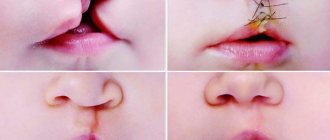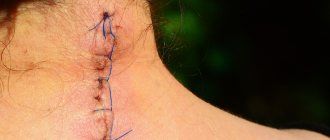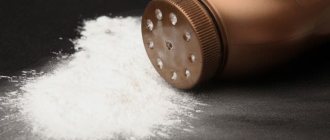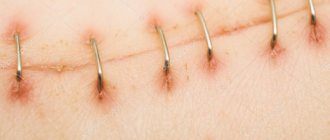A scar on the lip is a rather unpleasant cosmetic problem that is the result of injury or certain diseases. Hard scars not only cause psychological discomfort, but can also cause pain, itching, and disrupt facial expressions and speech.
Wounds on the lips heal quite quickly, since there are many blood vessels in this area. However, scarring is made more difficult by the fact that the lips are very mobile. There are often cases when a healed wound cracks, which is accompanied by pain and itching.
Therefore, after damage, pronounced scars often remain, which spoil the appearance and cause other troubles. However, there are many scar removal methods that are suitable for even the most severe cases.
Causes of scars on the lip
The delicate skin of the lips can be damaged even with minimal traumatic impact. After the integrity is broken, a wound appears in this area, when its edges grow together, a scar is formed. Most often, the skin of the lips is injured for the following reasons:
- Mechanical impact. The scar appears as a result of an impact or fall. This is the main cause of scar formation in children. After a small wound, an inconspicuous scar remains;
- After suturing. If the deep layers of the lip are damaged, for example, during a cut, the wound will have to be stitched with a ligature (surgical threads). Stitches will have to be placed after the tumors are removed from the lip. And although doctors try to carry out the procedure carefully, the damaged area is still slightly different;
- Herpes. This infectious disease is diagnosed in 90% of people. It manifests itself as a periodic rash that usually goes away without consequences after a week. But, if bacteria get into the bubble, then a wound will appear in its place, which will heal for quite a long time. After the scab falls off, a scar may remain in the area;
- Piercing. Even after a well-executed puncture, the natural structure of the skin on the lips is disrupted. After removing the jewelry, the hole will close, but a small depression will remain. If the piercing is unsuccessful or the person is allergic to metal, then the puncture site becomes inflamed, then a more noticeable scar remains;
- Animal bites or scratches. If you handle pets carelessly, you can damage the skin of your lips. As you know, there are a lot of bacteria in the saliva of animals, so an inflammatory reaction is guaranteed. And after the wound heals, a scar almost always remains.
A cleft lip is a congenital defect that results in a cleft lip. Pathology can be corrected using one or more plastic surgeries. During the intervention, the skin, muscles and mucous membrane are cut and then stitched together, so scars are inevitable.
Types of scars and their characteristics
To choose the most suitable type of scar correction, you need to know what type it is:
- Normotrophic. This is a barely noticeable mark that differs from surrounding tissues only in color, and in some cases, in sensitivity. Normotrophic scars are the easiest to disguise;
- Atrophic. In appearance, this is a depression that appears due to a lack of collagen in this area during regeneration;
- Hypertrophic. This is a scar that protrudes slightly above the skin level and is also wide. Such scars have a bright reddish-bluish tint, so they are striking. This formation is a consequence of infection entering the wound on the lip;
- Keloid. This is a raised scar that appears due to increased collagen production in the damaged area. This type of scar can grow tissue, making it the most difficult to get rid of. As a rule, keloids form against a background of weakened immunity.
In addition, there are tight scars, which appear as a result of the skin tightening after a burn.
Scar healing rate
The speed of healing depends on the degree of damage (depth and size of the wound), the general condition of the body, and the quality of wound care. If the wound is shallow, it heals quickly. Even if a scar remains after healing, it is barely noticeable and will completely resolve over time.
If the wound is deep or the person has undergone surgery on the lips , then the recovery process is delayed for several months (about a year). In this case, the condition of the scar depends on the behavior of the patient; if he takes care of the damaged area, the mark will be barely noticeable.
If a person neglects the rules of wound care, and his immunity is weakened, then the scar will be noticeable and will cause many more troubles. In any case, it is almost impossible to predict what the scar will be like.
To avoid troubles, speed up tissue healing and promote the formation of a neat scar, you need to use special external products. They are used to treat fresh scars to speed up their resorption.
Can a scar resolve on its own?
In some cases, a scar after a lip injury may disappear on its own. This is possible if the wound was minor and the regeneration process went without problems. Then the trace of damage will be barely noticeable.
In this case, we are talking about a normotrophic scar, which can resolve without outside intervention.
Over time, it becomes thinner, painful sensations are weakened, and its color approaches the surrounding tissues. Such a scar is practically no different from the surrounding tissue.
It is much more difficult to get rid of hypertrophic and keloid scars. Such scars do not resolve on their own; moreover, keloids can grow over a long period of time.
In this case, laser resurfacing will be the most effective.
Plastic surgery is effective in the fight against hypertrophic scars. Atrophic scars also do not disappear on their own. To remove them, you can use cosmetic procedures or plastic surgery.
Processing and required materials
Sutures require treatment for two weeks after surgery. This is necessary in order to prevent infection and suppuration of the incision site.
The following materials may be needed for manipulation:
An approximate processing algorithm is as follows:
- Moisten a sterile bandage with hydrogen and blot the desired area. Use tweezers. If you have a seam, the treatment should be delicate. No need to rub or press hard.
- You can lightly cauterize the wound with alcohol (especially if the seam is inflamed in some places).
- You need to apply a sterile bandage. Before this, the material is moistened in a solution of sodium chloride (10%) and wrung out. Another napkin is placed on top and secured with a bandage and adhesive tape.
- If the seam is in good condition and there is no suppuration, it is enough to repeat the procedure every two days.
There is no need to remove crusts and whitish deposits of the epithelium yourself. If they are damaged, the skin is re-injured and the cosmetic seam may become more noticeable. It is impossible to completely get rid of it and the scar will accompany you for the rest of your life.
Methods for removing scars on the lip
There are many ways to correct lip scars. However, it should be remembered that it is not possible to completely remove the scar, but it is possible to make the scar in the lip area less noticeable to others. When choosing a treatment method, you need to consider the type of scar.
In the early stages, you can use folk remedies and external preparations at home to remove small scars.
Cosmetic and physiotherapeutic procedures can be used to correct deep or raised scars. In advanced cases, only plastic surgery will help.
Use of traditional medicine
Effective folk recipes are used as part of the complex treatment of fresh scars:
- Apply a thick layer of cocoa butter to the scar and rub in gently to make the skin smoother. With regular use, healthy tissue will develop on the damaged area;
- Mix honey with ground cinnamon in a 1:1 ratio. Treat the scar with this mixture, leave for 15 minutes, and then wipe off. With daily use, the scar will become less convex and lighter;
- Chop a bunch of parsley and squeeze out the juice. Lubricate the lips with the liquid or apply a piece of gauze soaked in parsley juice to the damaged area. This method will help smooth out small scars and lighten them;
- Apply eucalyptus oil to the damaged area and secure with a bandage before going to bed. This liquid will make the scar softer, moisturize the skin, and normalize blood circulation. With daily use, a small scar will become almost invisible;
- Pass eggshells and grape seeds through a coffee grinder several times. Separately, dilute the white clay with water until creamy, add a little eggshell powder and seeds to the mixture. Apply the mixture to cleansed lips, massage gently, leave until the clay dries, and then rinse. After the procedure, lubricate the affected area with a moisturizing cream or oil with a healing effect.
There are many folk recipes that will help remove a scar on the lip after herpes, piercing or injury and improve the condition of the skin. However, these drugs will only be effective as part of complex therapy.
Drug therapy
To speed up skin healing and form a neat, almost invisible scar, it is recommended to use scar-resolving gels and anti-scar ointments at an early stage of treatment. Ointments and gels that will help remove scars from the lips:
- Contractubex based on allantoin, plant extracts and heparin has a pronounced anti-inflammatory effect. After its use, the scar softens, its growth slows down, and tissue healing accelerates. Contractubex ointment is applied to the damaged area twice or three times a day for 3 to 6 months;
- Dermatix helps smooth the skin and make it softer. As a result, the scar becomes less pronounced and does not cause discomfort. Apply the gel twice a day;
- Clearvin, based on medicinal plants, promotes the resorption of scar tissue. With regular application, the scar is smoothed out and its brightness decreases;
- Kelofibrase, containing urea and heparin, makes the skin softer, moisturizes, and evens out the skin. The drug is applied twice or three times a day, while it is recommended to use it once as a compress before bedtime;
- Zeraderm Ultra will help reduce the severity of hypertrophic and keloid scars that have long formed. The ointment contains potent substances that have a resolving effect and slow down the development of keloids. The drug is used only once in 24 hours.
Also, to speed up scar healing, silicone anti-scar patches are used, which moisturize the damaged area and soften it. With regular use, the scar becomes paler and its size decreases.
Removal of scar tissue using special procedures
There are many cosmetic and surgical techniques that allow you to get rid of a scar on the lip after an injury, split lip, piercing, etc. The choice of the appropriate procedure is made by a specialist. Normotrophic scars can be removed using ointments and cosmetic procedures.
Hypertrophic scars are corrected with laser or surgery.
Resurfacing, which takes place in several stages, will help make the keloid less pronounced and stop its growth. To correct atrophic scars, chemical peeling and hyaluronic acid injections are used.
Atrophic scars should be treated while they are fresh, and hypertrophic and keloid scars should be treated after healing.
Conservative methods of lip scar correction:
- Photocorrection is the treatment of a scar with high-intensity light using a special device that seals the vessels in the area of connective tissue growth. This technique is effective even at the stage of scar formation (up to 6 months), as it allows you to stop its growth. After treatment, the scar becomes less convex and turns pale. The procedure is contraindicated during pregnancy, cancer, endocrine pathologies, blood diseases;
- Chemical peeling is the removal of the top layers of skin and acceleration of its renewal process. First, superficial peeling is carried out using fruit acids, and then chemical peeling, which allows you to stop the growth of the scar and speed up metabolic processes. It is forbidden to carry out in the presence of neoplasms, irritation, dermatitis, herpes, hypersensitivity to drugs;
- Laser treatment of scars on the lip. There are 2 methods of scar correction: using neodymium and erbium lasers. In the first case, the device polishes the scar, and in the second, it evaporates the liquid in the damaged area, accelerating tissue regeneration. After several sessions, scar tissue disappears and new skin appears in its place. Laser correction is contraindicated in case of poor blood clotting, cancer, dermatitis, diabetes;
- Injections of hyaluronic acid are done in the presence of sunken scars. The liquid penetrates the damaged tissue and activates the production of collagen, due to the lack of which an atrophic scar has formed. The therapeutic effect occurs quickly. Contraindications: blood diseases, dermatitis, epilepsy, allergies to injected substances;
- Mesotherapy is the injection of beneficial solutions into the scar. These drugs accelerate metabolic processes, as well as the formation of new skin cells. Contraindications for mesotherapy are the same as for previous techniques. In addition, the procedure is prohibited if you are allergic to the components of the solutions or if you have implants.
In severe cases, surgical excision of the scar is performed. During the procedure, the edges of the scar are cut down to the level of healthy skin. The operation is performed under local anesthesia. Only fully mature scars are removed.
The recovery period takes up to 3 weeks, the final result is noticeable after 3 – 6 months.
Skin grafting involves grafting skin onto the damaged area. This is a more complex and expensive procedure that allows you to completely hide the scar.
Plastic surgery to remove scars is prohibited for diseases of the respiratory, cardiovascular, circulatory systems, infections, skin diseases, diabetes, etc.
Help at home for speedy healing
If a scar has formed on the lip, how to remove it is more important for the owner than any other information. You can try folk remedies that will help normalize processes in newly formed tissues, thereby making them less different from the rest:
- Cacao butter . If you apply a thick layer of it to the scar and rub it in lightly, the skin on your lips will become smoother. Daily use until the desired effect appears will ensure healthy tissue development in this area.
- Honey and cinnamon . This mixture, if you take the components in equal proportions, promotes tissue regeneration. It is applied to the problem area for 15 minutes, daily, then washed off. This will make the scar not only less prominent, but also less bright.
- Parsley . The juice of the plant whitens and refreshes the skin of the lips, making it softer. This also changes the appearance of the scar, it becomes less convex and turns pale.
- Eucalyptus oil . It softens, moisturizes the skin, restores blood circulation. Applying eucalyptus oil at night and covering it with a bandage can make the scar less noticeable.
For information on how to treat scars with folk remedies, watch this video:
These methods are most effective for small scars left after herpes or other rashes on the lips. If the problem is more serious, you can use pharmaceutical products . Many of them also contain herbal ingredients, but the effectiveness of the drugs is much higher. Among the tested means:
| A drug | Description | Photo |
| "Kontraktubex" | This is an ointment with allantoin, anti-inflammatory plant extract and heparin. It softens the scar, inhibits the growth of its tissues, and helps healing. Use the ointment 2, 3 times a day for 3, 6 months | |
| "Dermatix" | Helps smooth skin, moisturize and soften. Due to this, the scar becomes less noticeable and does not bother you with unpleasant sensations. Use the gel twice a day | |
| "Clearwin" | Consists of plant components that promote tissue resorption. The scar smoothes out and fades | |
| "Kelofibrase" | The ointment contains urea and heparin. The first softens and moisturizes tight skin. Heparin helps to level it. "Kelofibraza" can be applied several times a day, make lotions with it at night | |
| "Zeraderm Ultra" | The product helps with long-formed and dense scars. It contains potent absorbable components, which allows you to fight keloid and hypertrophic scars. It is enough to apply it once a day |
Scar on a child's lip
In children, lip injuries are most often caused by a fall. If the wounds are shallow, they will heal without leaving a mark, and most scars will become less noticeable as the child grows older.
This is due to the fact that the structure of the skin of young patients resembles that of an adult closer to 7–8 years of age. Then the connection between the epidermis and the dermis increases, the skin fibers become larger, and the condition of the sweat glands changes.
All these changes will lead to the fact that over time, most scars will disappear or become almost invisible.
If there is a deep wound, you must urgently stitch the wound and treat it with antiseptic and antibacterial agents prescribed by the doctor. After the wound has healed, the scar should be treated with creams or gels that will speed up regeneration and help make the scar less noticeable.
However, it should be remembered that these products can cause allergies.
Laser resurfacing is also used to remove scars on the lip in children. To correct the shape of the scar and reduce its contours, plastic surgery is prescribed. Fresh scars are more amenable to correction, so treatment should begin in the first 6 to 8 weeks.
Traditional methods for scars after dissection
Traditional medicine is rich in recipes for home use based on available ingredients. Products for use at home stimulate blood flow and metabolism in scars, which speeds up their healing. Cocoa butter, parsley juice, cinnamon, and honey, when used regularly, remove the contrast between healthy and scar tissue, making the defect less noticeable. Lotions made from eucalyptus oil, aloe juice, and onion pulp remove traces of herpes and vitaminize the skin. The scar becomes susceptible to the effects of cosmetic manipulations, and treatment is easier. If epithelization of the injury has occurred, you should not self-medicate, the effect will be insignificant. You should consult a doctor.
Preventive measures
To prevent the occurrence of pronounced scars, you need to properly care for the wound:
- If your lip is cut, you should consult a doctor who will stitch you up and advise you on how to care for the wound;
- Regularly treat the wound with antiseptics and antibacterial agents recommended by the doctor;
- After the wound has healed, use external preparations that relieve inflammation and accelerate tissue regeneration;
- During treatment of herpetic lesions of the lips, increase immunity;
- Do not remove any crusts that have formed from the wound;
- If you decide to get a piercing, then choose an experienced master and a high-category beauty salon.
Scars on the lip are a cosmetic defect that causes complexes and, in some cases, physical discomfort.
To avoid scarring, you need to properly care for damage to the delicate skin of your lips.
But, if a scar has already appeared, then there are many ways to correct it. The choice of the appropriate method depends on the type of scar; this decision is usually made by the doctor together with the patient. To speed up wound healing and promote the formation of a neat, almost invisible scar, the patient must follow the doctor’s recommendations.
Scar treatment methods
Experts know better how to remove a scar on the lip after an injury. After all, there are several professional ways to deal with them:
- Laser resurfacing . The method is the evaporation of excess tissue in a hypertrophic scar. The upper layers of the problem area disappear under the influence of the beam. At the same time, the skin underneath becomes more even and normally colored. Sometimes this requires more than one procedure.
- Using a fractional laser . This beam stimulates increased formation of collagen and elastin, as it has the ability to penetrate into the deep layers of scar tissue. After some time, the scar, thanks to collagen and elastin, is replaced by smooth skin.
To learn how laser scar removal works, watch this video:
- Injections of hyaluronic acid . For atrophic scars, this method is incomparable with others. The substance, entering the tissue, stimulates the production of collagen. It is its deficiency during the healing period that leads to the appearance of a dent on the lip.
- Photo correction . The method is based on the use of equipment that seals the vessels growing in the area of connective tissue. This helps stop the scar from thickening while it is still forming. That is, photo correction is effective if the scar is no more than six months old. Thanks to her, it becomes less convex and lighter.
- Tattoo . This method is indicated in the presence of a poorly expressed scar, that is, normotrophic. With the help of tattooing, you can make the contour more even if it was distorted due to a scar, and also give the surface the same color throughout the entire space.
It is better to decide with a specialist how to remove a scar on the lip. This will allow you not to waste time or waste money. It is imperative to look for a way to restore the appearance. Indeed, with the development of medicine, there are more and more effective methods.
A scar or scar on the lip is a cosmetic defect caused by dissection of facial tissue, viral diseases, surgical operations of intrauterine development abnormalities in a newborn child, such as a cleft lip or cleft palate.











